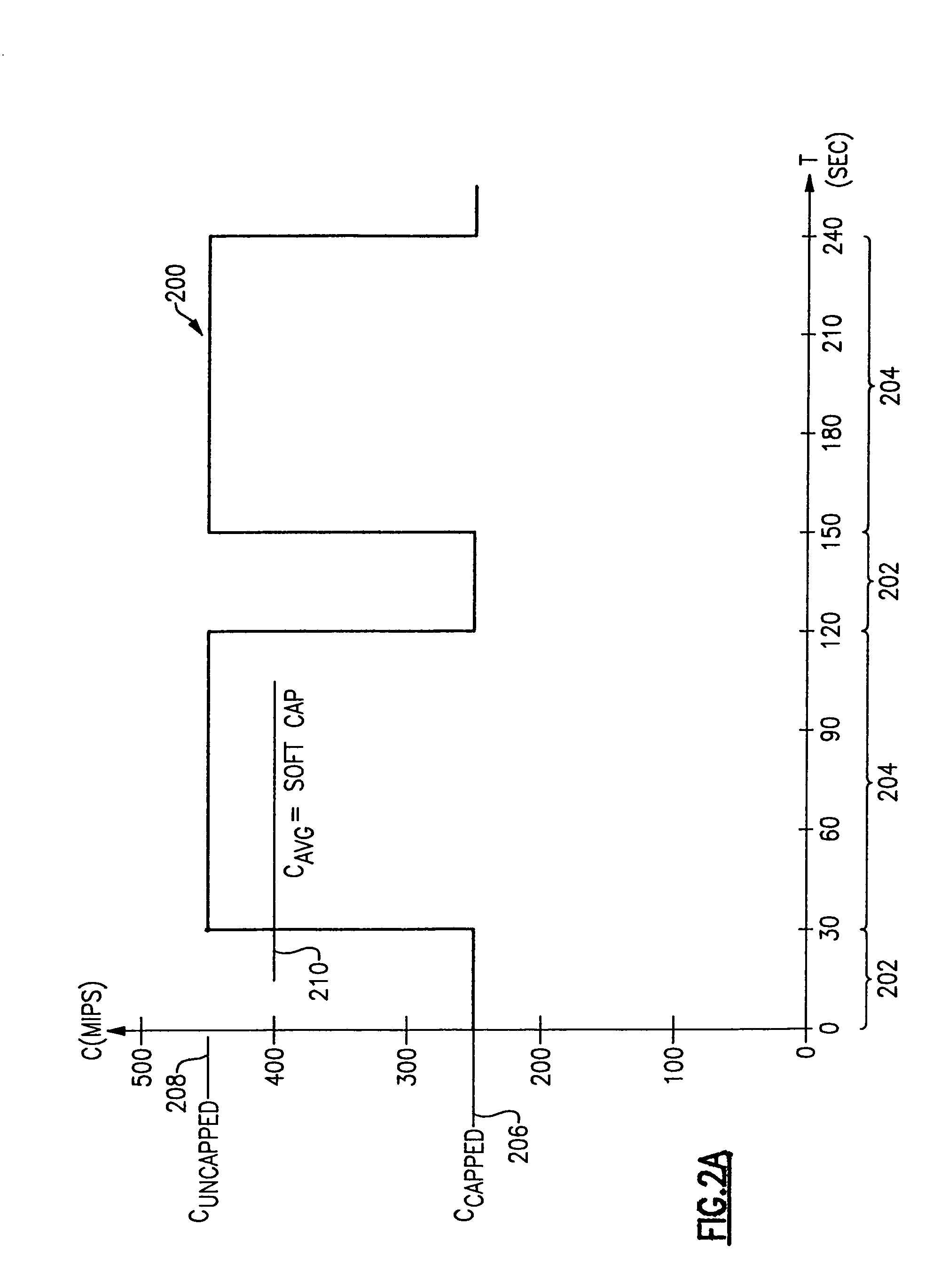Method and apparatus for enforcing capacity limitations in a logically partitioned system
a technology of information handling system and capacity limitation, which is applied in the direction of multi-programming arrangement, program control, instruments, etc., can solve the problems of not allowing installation, reducing software costs, and end users building less than optimal configurations
- Summary
- Abstract
- Description
- Claims
- Application Information
AI Technical Summary
Benefits of technology
Problems solved by technology
Method used
Image
Examples
Embodiment Construction
[0040]FIG. 1 shows an information handling system 100 incorporating the present invention. System 100 comprises a central electronics complex (CEC), or physical machine, 102 containing a plurality of central processors (CPs) 104, an exemplary four of which (CP1–CP4) are shown. Although not shown in FIG. 1, machine 102 also contains other conventional elements of a computer system, including memory and connections to input / output (I / O) peripherals such as direct access storage devices (DASD) and the like. A logical partition (LP) manager 106 partitions the physical machine 102 into a plurality of logical machines called logical partitions (LPs) 108, an exemplary four of which (LP1–LP4) are shown. Executing in each logical partition 108 is an operating system (OS) 110, containing a component 112 called workload manager (WLM), and one or more applications (APP) 114. Each operating system 110 performs the usual functions of providing system services and managing resources for applicatio...
PUM
 Login to View More
Login to View More Abstract
Description
Claims
Application Information
 Login to View More
Login to View More - R&D
- Intellectual Property
- Life Sciences
- Materials
- Tech Scout
- Unparalleled Data Quality
- Higher Quality Content
- 60% Fewer Hallucinations
Browse by: Latest US Patents, China's latest patents, Technical Efficacy Thesaurus, Application Domain, Technology Topic, Popular Technical Reports.
© 2025 PatSnap. All rights reserved.Legal|Privacy policy|Modern Slavery Act Transparency Statement|Sitemap|About US| Contact US: help@patsnap.com



